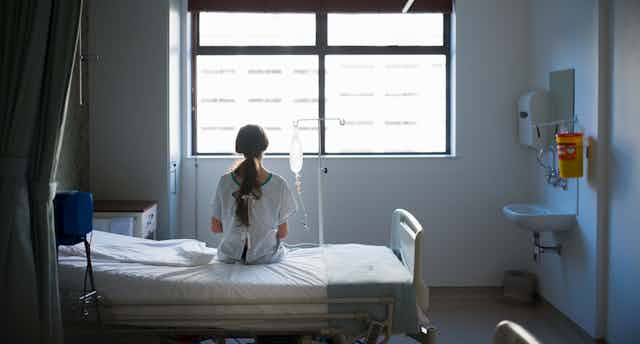Ethicists argue that healthcare is special. Unlike other consumer goods, its availability and accessibility should be based on need rather than ability to pay.
In New Zealand, however, our tolerance of a two-tier health system – in which some services are only available for a price – suggests a degree of moral ambivalence.
Take, for instance, the recent Health and Disability Commissioner report detailing inadequacies in cancer treatment and management in southern parts of New Zealand. Alongside cases of patients seeking urgent cancer treatment in the private sector, it raises questions of justice about our two-tier health system.
Many seem to accept the argument that a two-tier public-private health system is not morally problematic, given most essential health services remain free to all. Some might go further and argue justice demands a two-tier system because health is only one public good the state is obliged to provide. Limiting non-essential healthcare services ensures it can meet those obligations.
The second private tier protects the liberty of those who want and can afford to purchase those services, while the first public tier focuses on meeting everyone’s needs to a sufficient level.
But the justice argument supports this conclusion only if the services and benefits provided in the first tier meet that threshold of sufficiency. Where exactly this threshold lies has been the subject of perennial debate.
Eroding the public system
We might start with the idea that a sufficient level of healthcare includes “vital goods and services essential to human flourishing”.
While this excludes some services (high-cost treatments with uncertain benefits), it demands more than what the public sector is currently providing to New Zealanders. It should include (at least) more comprehensive and universal access to primary and oral healthcare and timely access to cancer treatment.
Read more: High cost means more than half of NZ's young adults don't access dental care
Our willingness to accept a second tier of healthcare accessible only to those who can pay depends on the sufficiency of the first tier. The worse the services in the first tier, the weaker the justification for the second tier.
Many also seem to accept the argument that the private sector plays an important, possibly even altruistic, role in supporting the public sector. A provider at a new private clinic in Dunedin recently stated:
We’re proud to back up the public health system by providing an alternative service that will take some of the pressure off the public system.
Patients are susceptible to the idea that by paying for private treatment they are “freeing up a bed” for someone in the public sector.
This argument is misleading at best. When the public system isn’t adequately resourced to meet the need, patients who receive their care privately do not have a bed or a spot to give up. The lack of a spot is often what drives them to the private system in the first place.
On the contrary, the proliferation of private-sector facilities and policies that favour this proliferation may either implicitly or explicitly aim to deplete the public sector.
Following the principle that every private bed is one the state does not need to provide, private beds don’t free up public beds, they replace them.
We should not be under any illusion that private insurance and private healthcare are altruistic in relieving pressure on the public system. They profit from failures of the public system to meet current needs and patients’ desperation to receive timely treatment.
Eroding solidarity
The Health and Disability Commissioner’s report on cancer treatment in the southern region highlights demonstrable harms for patients who did not receive timely treatment in the public system. In a particularly stark recent case, brothers who received cancer treatment in the public and private system respectively experienced tragically different outcomes.
Examples like this show a growing gap between the services available in the private and public tiers of our health system. This gap threatens social cohesion and solidarity.
When the worse-off are required to accept services below reasonable expectations of routine care (and the demonstrable harms that result), individuals are no longer in the same boat. The better-off live in a world of social goods and privileges inaccessible to the worse-off.
Why we accept this in health and not other sectors is an important question. It is hard to imagine school teachers only taking bookings months out to see parents seeking help for their troubled children, or denying entry to public schools due to limited capacity.
It is also doubtful we would accept teachers setting up private classes and consultation times to provide a timely service to those who can pay.
Entrenched inequities
The commodification of healthcare was built into the New Zealand system from the outset, with medical professionals demanding the freedom to charge fees for their services. The results are evident in many of our health statistics that reflect entrenched health inequities, particularly between Māori and non-Māori New Zealanders.
While we are likely stuck with a two-tier system for the foreseeable future, it can and should be made more just by ensuring all “vital goods and services” are securely provided in the public sector.
Read more: New Zealand's health restructure is doomed to fall short unless its funding model is tackled first
Health is special. It preserves a range of opportunities people need to live flourishing lives. We should demand a health system that is committed to preserving those opportunities for everyone.
We need our political leaders to tell us whether they stand with us in support of this goal and indicate their commitment to universal healthcare. If so, we need them to acknowledge this can only be achieved with some fundamental shifts in how we think about the public-private divide.

